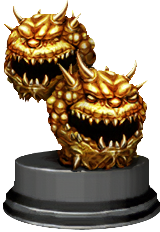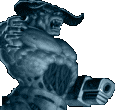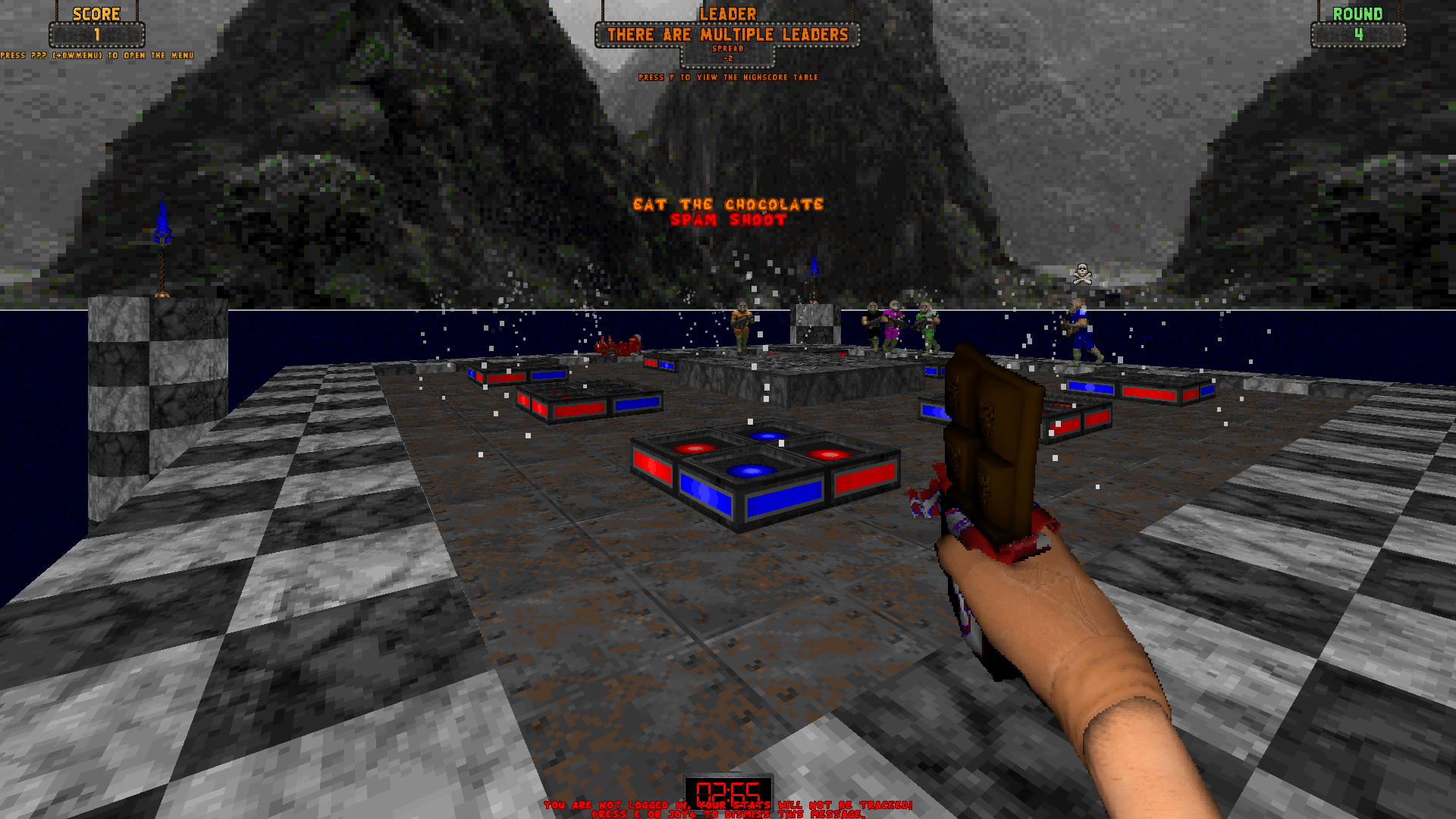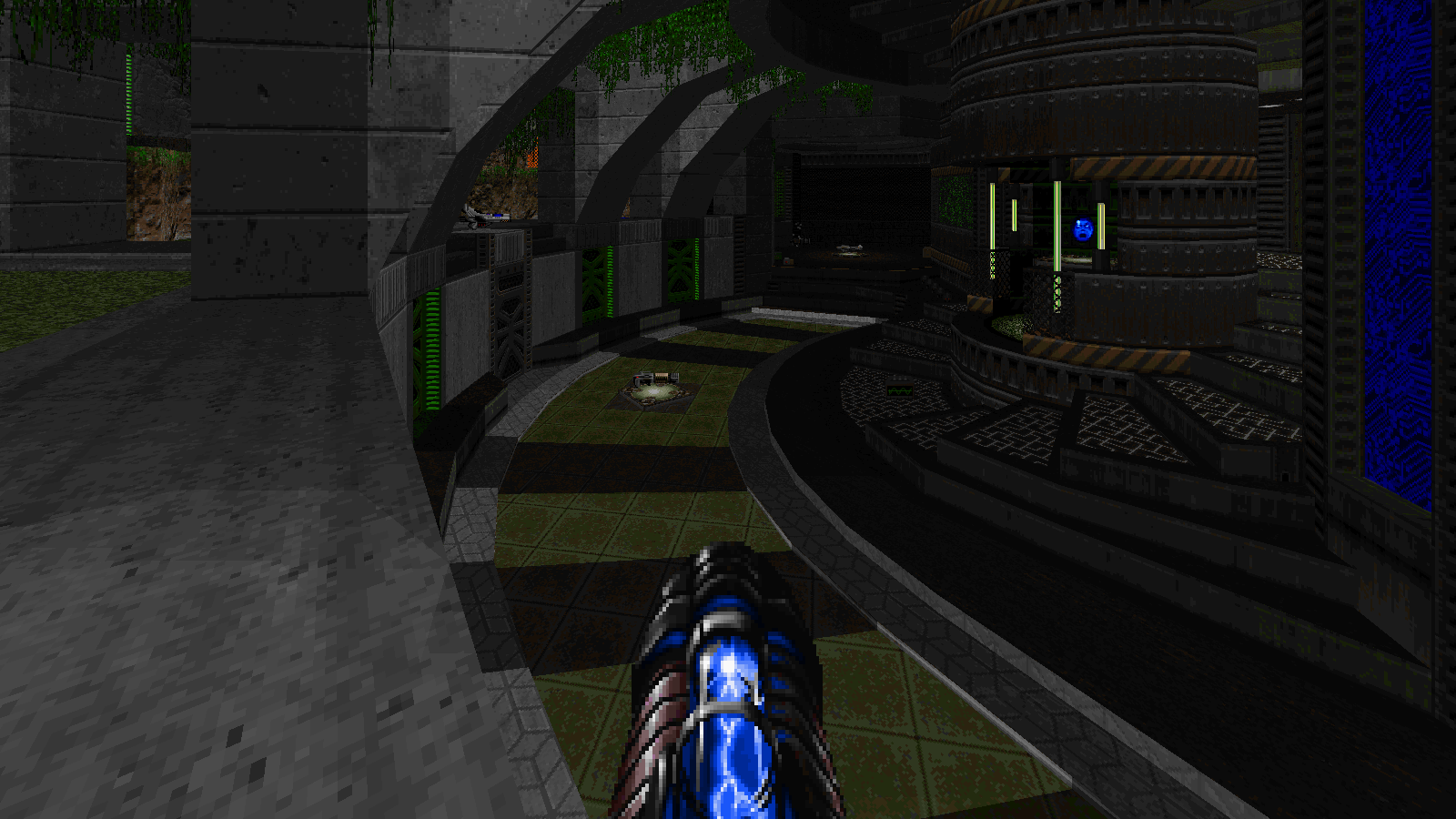-

Doom 2, Zandronum, 1 map
Multiplayer Doom is intense. It plays as a game in which glass cannons on rocket rollerblades zoom around the maps with impossible velocity and kill each other in the blink of an eye thanks to an absurdly deadly arsenal. It requires unbroken focus that leads to physical exertion. Games often end on a bitter note as the winner jumps on the table, pantless, bragging about last night's escapades with the opponent's mother, while the loser complains of lag and plots a revenge worse than anything in The Princess Bride. Doom was designed that way, that was Romero's groove. But it can be a bit much in these trouble times, right? What if the intensity went away for a while?
DoomWare is a "party game" for up to 16 players based off Nintendo's WarioWare series, and the knowledgeable reader already understands what that means...minigames. Very short, rapidly changing minigames of varied genre, length, difficulty, relation to Doom and level of absurdity. Players may get dropped into a small deathmatch area and duke it out with a single life each, or they may kart race on a rainbow circuit. Or a bunch of Cyberdemons can be dropped into the players' starting area and it's time to dodge rockets. There are obstacle courses, survival scenarios, memory games and also a whole bunch of comically simple rounds that instruct you to not equip the chainsaw. Which you promptly do, because three rounds ago you were instructed to equip the plasma rifle—and failed, because you panicked and forgot what the plasma bind is. But now I'm spoiling a bit, as Buu recommends that first-time players should go in with minimum knowledge about the wad. Perhaps avoid telling your friends what you're setting up for them, but tell them to turn their music on, it's actually important for at least one minigame.
One game consists of 25 rounds by default, each round randomized from a pool of 100 planned minigames (as of writing this, there are 90). Every few rounds the tempo of the minigames increases, with difficulty level also affecting game speed. This creates pressure and leads to hilarious mistakes as some challenges end in mere seconds. Some rounds give points to everyone who completed a task, e.g. completed a kart race, or jumped into water in time. Some award just the winner, and some split the points in other ways, like the DM arena which turns every frag into a point. Usually there's also a Mario-like mushroom pickup to be collected for bonus points. But the last piece to the competitive aspect of the game is, of course, the glory of pettiness. Many of the survival and obstacle rounds equip you with the Heretic staff that can push other players just a little bit...which is more than enough in a Chasm-style ledge race.
DoomWare isn't the first project ever that tried to port WarioWare into Doom or minigames in general, a notable example being Icon of Party. However, the others lacked the rapid-fire pace of the Ware-style, because they'd either chain the tasks into one long obstacle course, or play one minigame per map. In comparison, the entirety of DoomWare happens on one giant map split into small separate arenas, and the logic is operated by a humongous blob of ACS scripting currently OVER 9000 lines long and meticulously commented (coder's heart flutters). This allows for smooth and fast transitions between the rounds and keeping track of the overall score.
Most importantly, DoomWare is a wellspring of lighthearted fun, and it is as entertaining as you and your friends allow it be. While not a true party game in the sense of sitting on one couch and passing over controllers, it absolutely is a voice chat game, because you need to yell at your friend how much you hate them for pushing you into lava. The project isn't entirely finalized just yet, and Buu plans to add more minigames, fix bugs and tweak balance, but four years from its first public beta it's more than enough to win the crowds, and the prize.
- @dew
-

Progressive Duel 3 - @Ru5tK1ng, @Hatred et al
Doom 2, Zandronum, 14 maps
The final episode of the series that won a Cacoward in 2017 was released with little fanfare in early November, but its offering of 14 new maps that bring the total to 30 is impossible to ignore. In a sense it's more of the same, but when "the same" is increasingly refined, yet highly compact 3D architecture, and the team settling into confidence about the new meta brought by customized weapons and armor mechanics...well, that's it. That's coming as close as possible to the ephemeral ideal of carrying newschool, Quake 3 Arena-style, full 3D gameplay over to Doom, and why wouldn't you want more of that.
To reiterate, ProgDuel is a Zandronum mapset taking full advantage of its features, including 3D floors. It incorporates the Eon Weapons mod, which tweaks some existing Doom weapons (slightly stronger SG, faster CG) while adding Quake-based arsenal such as the lightning gun, railgun or the grenade launcher. The EW guns have been balanced for years to adjust them to the quirks of Doom/Zandronum, so you're guaranteed the most consistent weapon set outside of the Doom weapons themselves. Furthermore, PD3 finalizes the armor stacking model, so your garden variety of green and blue gets expanded with yellow and red, the latter going up to 83% damage reduction! With lesser armor pickups repairing the greater ones, this is potentially more powerful than a megasphere, and introduces rarely seen map control tactics.
These maps are the culmination of years of experience and, erm, progress. Two chief contributors, Rust and Hatred, reunited after their 2013(!) EonDM project. Rust's brother @Razgriz has been a staple of MXU projects such as DBAB (2015) and AeonDM (2016). Newcomers @Dragonfly and @killerkouhai cut their teeth on NeonDM (2019). The team clearly found a working formula and proves year after year that there is a middle ground between the spartan minimalism of Dwangos and overboard environmental detail of Crucified Dreams.
Dragonfly is the most adventurous with his themes and colors while keeping conservative with very clean 3D design, small practical jump pads and trademark architecture for major boost items. Rust gravitates towards rectangular areas with 3D walkways, interconnecting lifts and a surprising amount of experimental horror effects such as fog and spooky sounds. Razgriz keeps his texture themes utilitarian while giving more open space than the average, potentially creating chaotic, unrelenting rhythm. Everyone's beloved returning oldschooler Hatred provides a set most clearly inspired by lessons of Q3A and UT, both in theme and layout. You'll know those winding staircases. The closing guest map by KK feels very much like a throwback to NeonDM, underlining the MXU legacy.
It remains to be seen which maps become true hits, because the tastes of the DM community are largely inscrutable, but PD3 seems properly seasoned and digestible. Might as well be all of them.
- @dew




